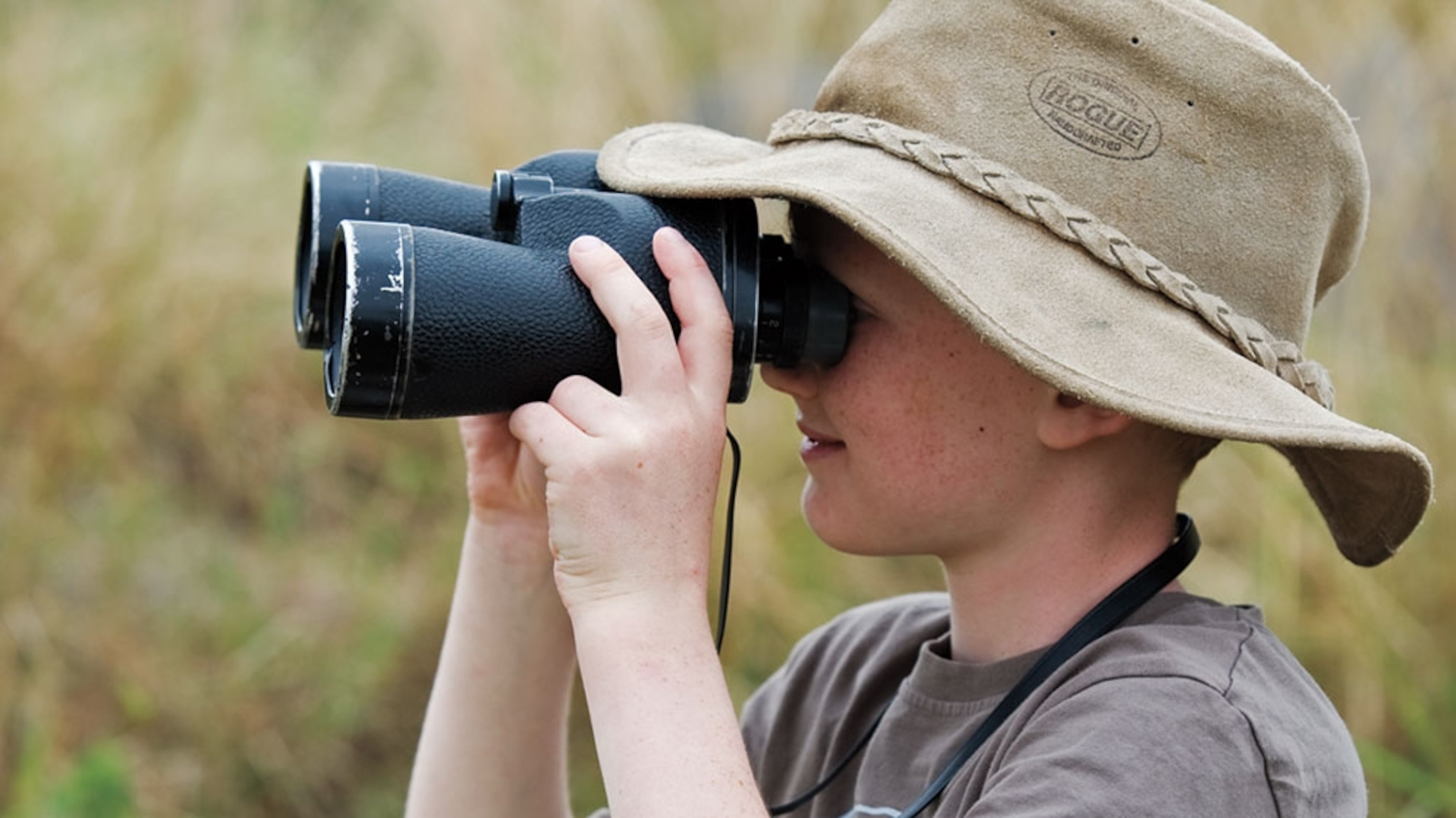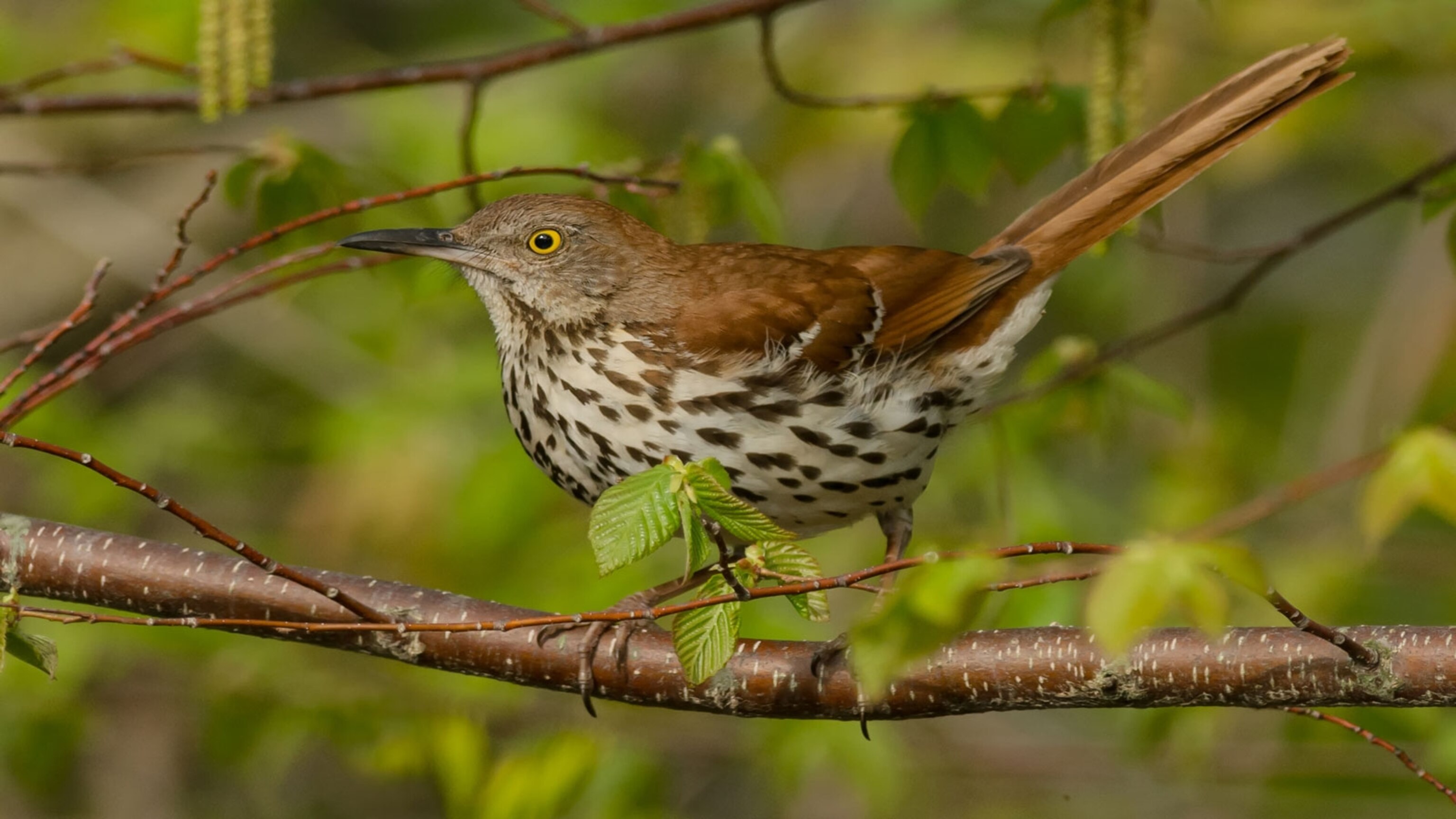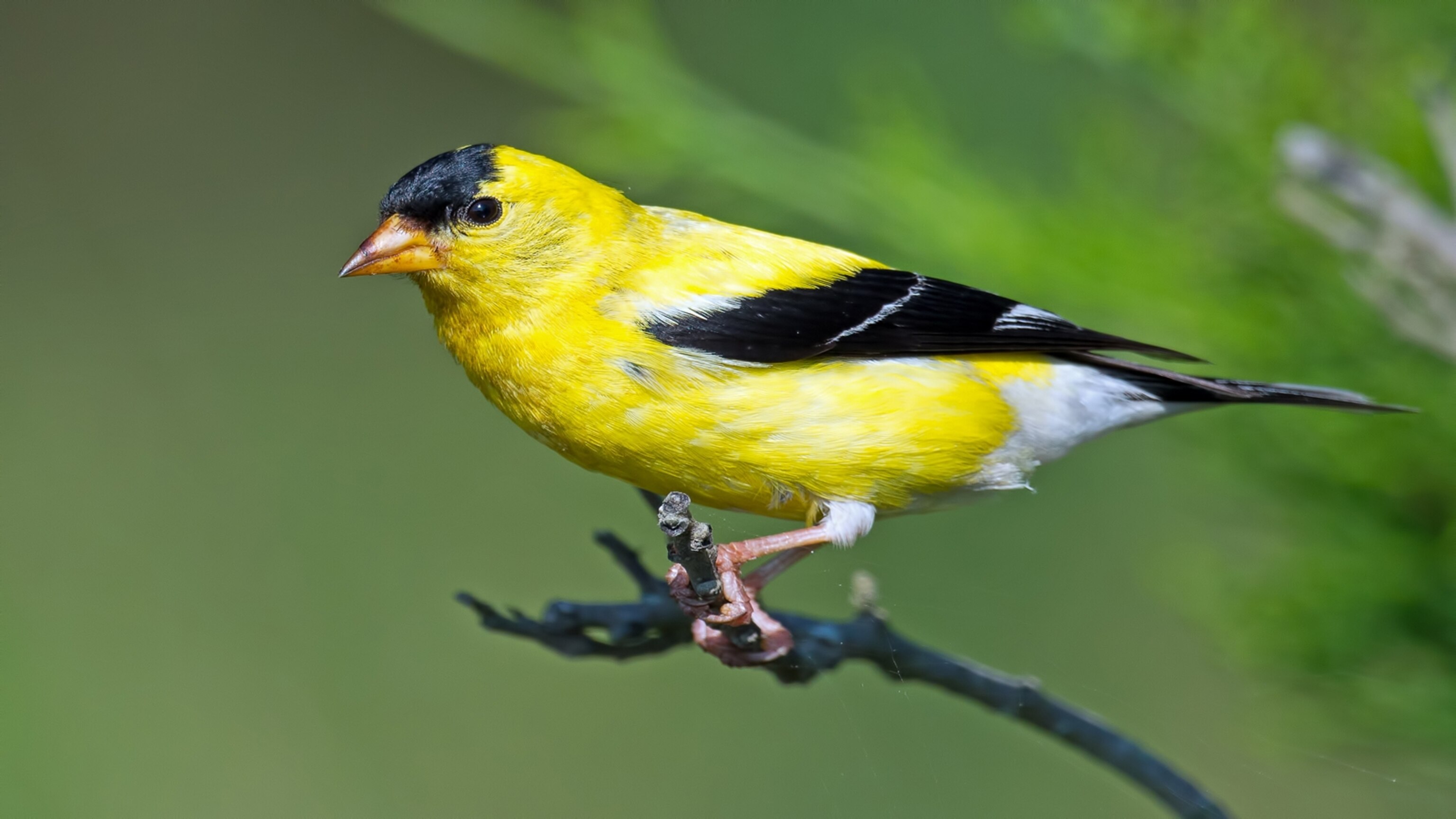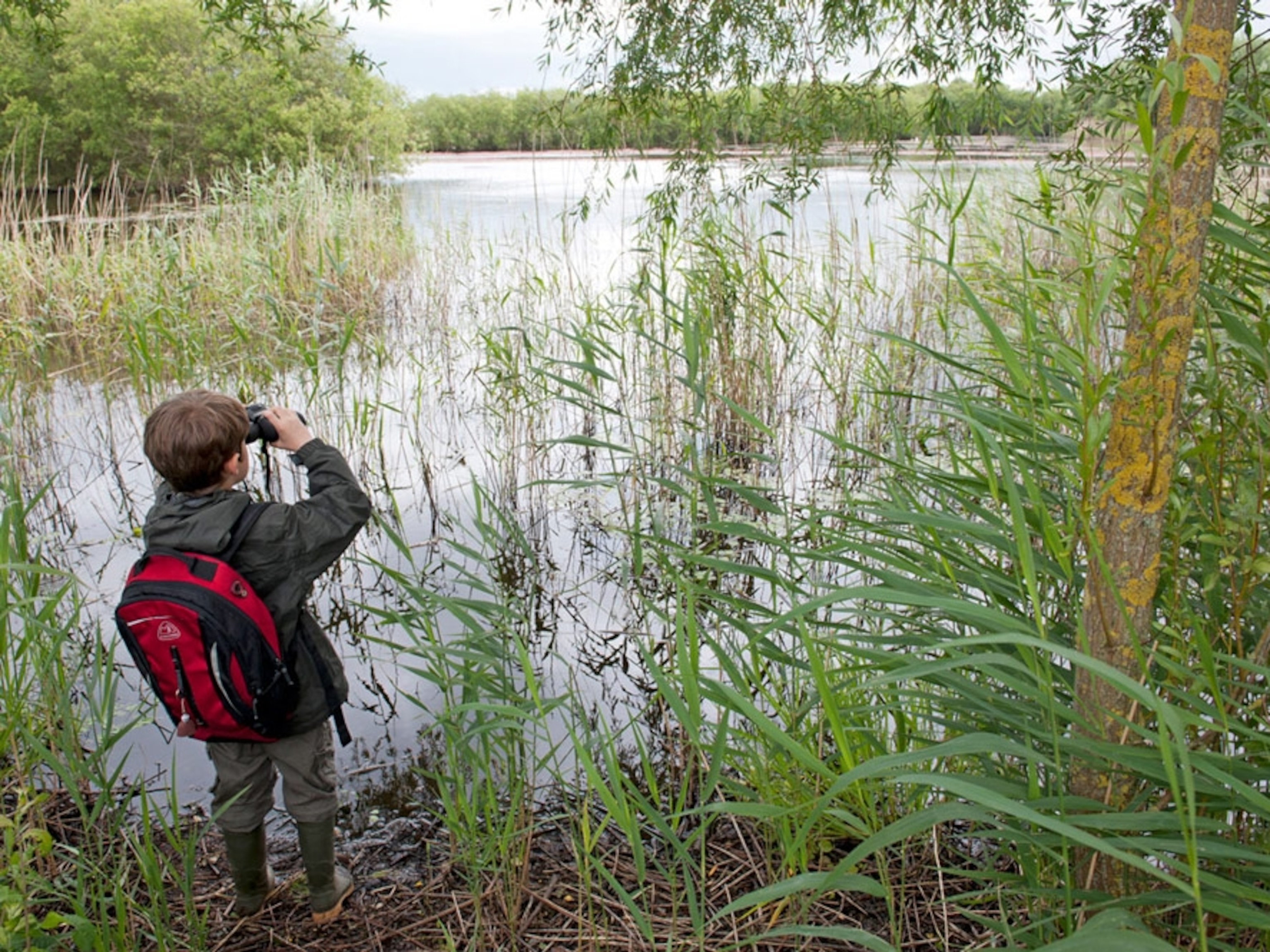
Getting started as a birder
We've got tips to help your family get started exploring the world of birds.
Birds have favorite places, just like people. Although some birds seem to live just about everywhere, most birds prefer a specific type of habitat. That’s because the land and plants of an area provides them with what they need to live a healthy life.
Even within a specific habitat, there are places that are especially attractive to birds: places that have lots of food or that are safe to nest or to roost overnight. If you want to see lots of birds, be on the lookout for these special locations:
• Edges. Anywhere the habitat changes from one type to another, such as the place where a forest stops and a field begins.
• Sheltered Areas. Birds are attracted to small areas out of the wind because they tend to be warmer, especially in winter.
• Water. Water is a magnet for all kinds of birds in all kinds of places, from deserts to mountains.
• Your Backyard. A backyard or common area where you can put up a bird feeder and birdbath is likely to attract a large number of birds.
Be a bird detective

Once you are watching a bird, it’s time to play detective. Each bird you see is a mystery for your family to solve. And like any detective, you have to search for clues and gather evidence to help you solve each mystery. Here are things to look for.
What are its field marks?: “Field mark” is the term that bird-watchers use to describe something unique about a particular species of bird. Field marks are the clues that will help you put a name to a mystery bird. The first thing that most people notice about a bird is its color, but there are a lot of other field marks. Sometimes you need only one clue to identify a mystery bird, but often you need several clues to find the answer. Here’s a list of the most important types of field marks to consider:
• Color
• Size
• Shape
• Behavior
• Song
What color is the bird?: There are completely red birds (male cardinals) and completely black birds (crows), but most birds are a combination of colors. Remember to look at the pattern of dark and light areas on a bird, as well as its colors. Can you see streaks on the chest, spots on the wings, or a white tail? Noticing these patterns can help you tell similar birds apart.
How big is the bird?: It helps to compare a new bird to a common one you already know. For instance, is it bigger than a robin or smaller than a robin? Try thinking of it this way:
• Tiny—Hummingbirds
• Small—Sparrows, chickadees, wrens
• Medium—Robins, jays, blackbirds
• Large—Crows, hawks, ducks
• Huge—Eagles, herons, pelicans, swans
What shape is the bird?: Is it tall and slender with long legs for wading in the water? Does it have a crest like a Blue Jay or Northern Cardinal? Or is it small with short legs for hopping on the ground? What is the shape of its bill? You might not be able to give your mystery bird a name just by looking at its shape, but you can often figure out what type of bird it is. For instance, that tall bird with long legs might be a heron and that small bird with short legs hopping on the ground is probably a sparrow
Use your ears.

Songs and call notes can be as important as visual clues. Each bird species has its own special songs and calls. Some birds have such memorable songs that they are named for them. Chickadees really do go chick-a-deedee-dee and the Eastern Phoebe calls out fee-bee. Some experienced birders can identify birds just by their songs and calls. Even if you don’t recognize a bird’s song, it’s a great clue to where it may be hiding.
Get in gear!
It is possible to look at birds without binoculars—for example, at a window feeder or a park where the birds have become tame. But, almost always, binoculars help you see birds much more clearly. Through binoculars the birds will appear close up, so you can see details. And with binoculars, you can easily see birds that are flying high in the sky or feeding up in the treetops. Many families have a pair of binoculars that are used at sporting events or concerts. While these may not be ideal binoculars for looking at birds, they are better than no binoculars at all.
A small notebook and a pencil are useful, but not essential. Encourage the kids to jot down the date and place and what birds they saw, and any interesting details about the bird. Later, if they start a life list (a list of all the species you have ever seen), they'll have a record of the birds they've already seen. For starters, try keeping a list of the birds your family sees in your backyard taped to the refrigerator and update it with new birds as you see them.
Bird guides are great to have, but it would be better to concentrate on watching the birds when you’re outside and look the birds up in the book later on.
Clothing in bright colors, bold patterns, or white can scare birds. If possible, wear tan, dark green or olive, dark blue, or brown. Avoid noisy nylon jackets or pants that make loud, swishy noises when you walk. Wearing a baseball-style hat will shield your eyes from the sun’s glare and make it easier to see birds in the treetops or soaring high in a sunny sky. Don’t wear sunglasses, though; they make it impossible to see birds hiding in darker places.
Play by the rules.
• Be quiet and careful. If you make noise, talk in a loud voice, or get too close, the birds will get scared and fly away. Be stealthy and sneak up on birds, so they stay put and you can look at them. You can get fairly close if you try! And when you do, you might be able to snap some photos.
• Don’t disturb nesting birds, their nests, eggs, or baby birds. If you come upon a baby bird on the ground that is not yet able to fly, leave it where it is. Chances are, the baby bird’s mother knows where it is and will come to feed it. If it has left the nest, it may be close to being able to fly. Although a baby bird that has left the nest too soon may not make it, baby birds that are “rescued” by people often die. If you’re in doubt, call your local Audubon Society or a veterinarian.
• Respect private and public property. Make sure your kids ask permission before going onto private property—like yards, country clubs, or private beaches—to look at birds. While in parks or nature preserves, stay on paths, trails, or boardwalks, and don’t do anything to damage the environment. When there are no trash cans around, put your litter in your pocket or backpack and take it home with you.
• Have fun!
Text adapted from National Geographic Kids Bird Guide of North America by Jonathan Alderer


